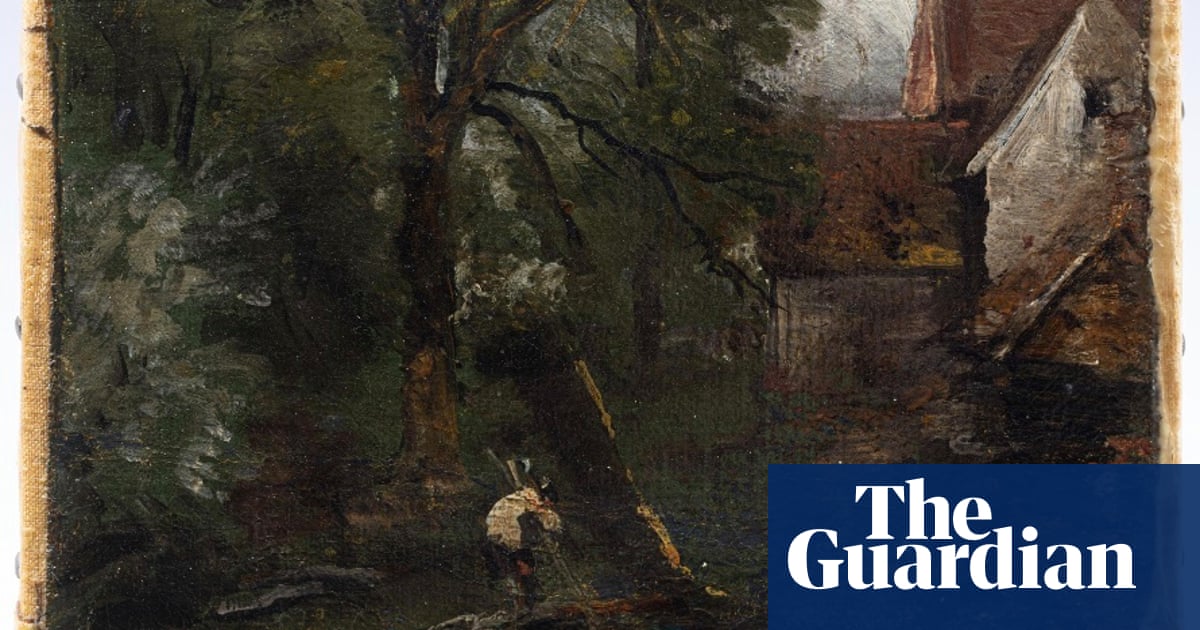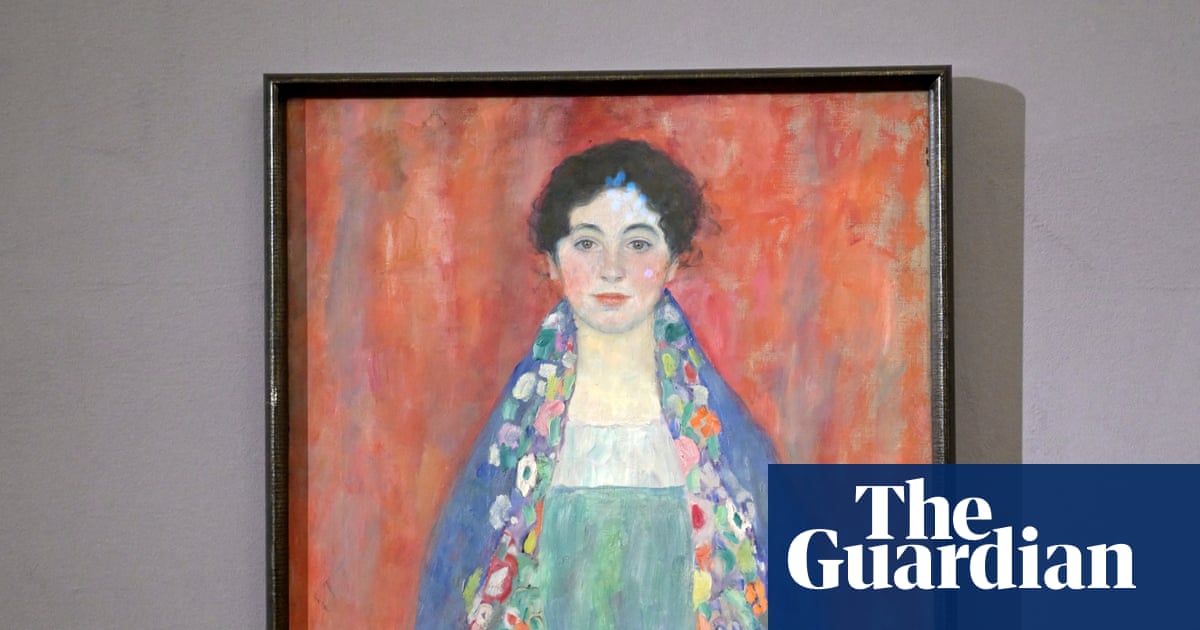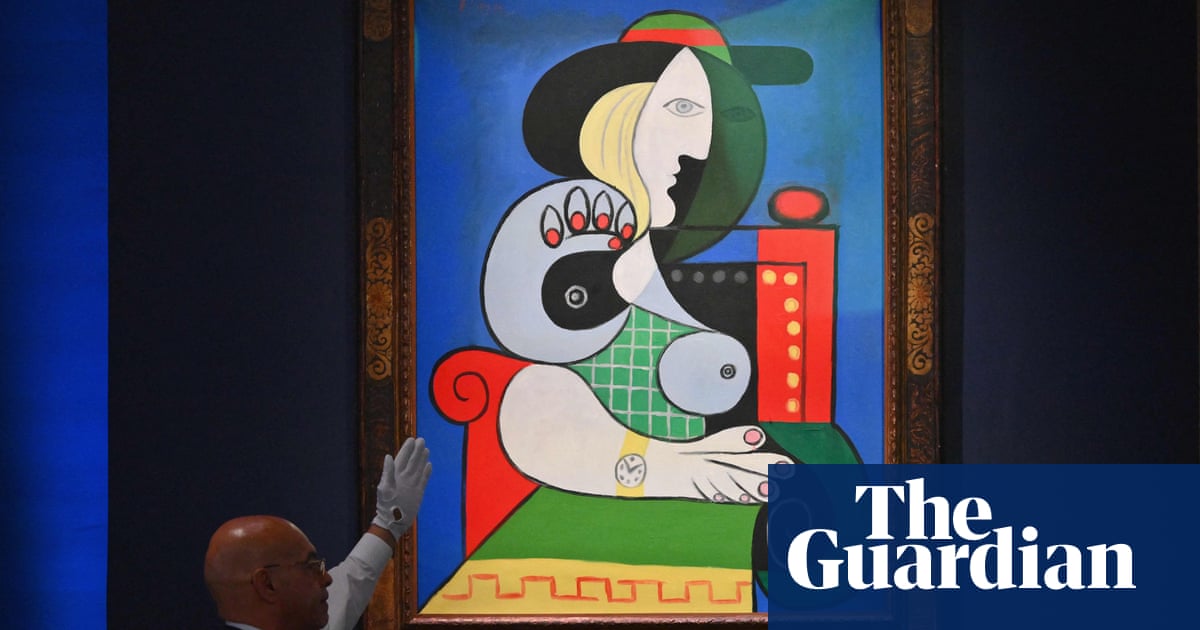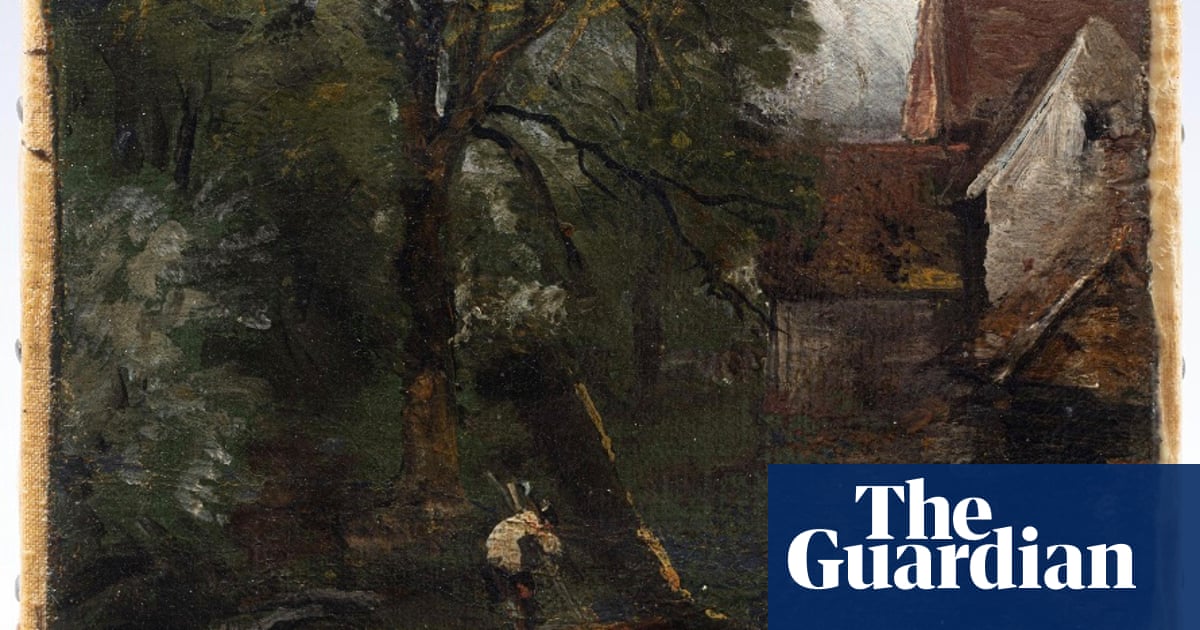
A “lost” painting by John Constable found hanging on the wall of a terrace house in Guernsey showing a different view of a farm cottage that features in one of his most celebrated works has been sold at auction for £200,000 – almost double the guide price.
The oil on canvas sketch, thought to have been done in situ in 1814, shows the rear of Willy Lott’s house, which appears in Constable’s 1821 masterpiece The Hay Wain.
It was found in a house in Guernsey and was auctioned amid huge excitement at Martel Maides Auctions in St Peter Port.
After fierce bidding, the painting was bought by an anonymous private collector based in Guernsey so is expected to remain on the island, but it may disappear from public view again.
Jonathan Voak, a paintings specialist at the auction house, said: “It was a terrific result comparing it with the estimate of between £80,000 and £120,000.
“There was a great atmosphere in the sale room. Multiple telephone bidders and lots of people in the room who wanted to see it being sold. The interest has been phenomenal.
“It’s an anonymous bidder [who was successful] but the picture will be staying in Guernsey. It will go into a private collection here.”
He said lots of people had relished the chance to see it over the last few weeks. “It’s had a good old airing and I think people will be glad to hear it’s going to stay in Guernsey.”
The whereabouts of the sketch was unknown for 44 years, its location last recorded in 1979 when it appeared in an Italian scholarly publication listing Constable’s works.
Voak said: “The painting was found among a large number of items that came from an old terrace house in Guernsey. It was first seen by a member of our team hanging in a dark corner of the dining room.
“That was some years ago and at that time it was certainly not thought to be a genuine Constable. It subsequently came to MMA when the owner died as part of the deceased estate.”
The auction house says the sketch, which also shows a figure cutting logs, had a “firm provenance” stretching back as far as the 19th century when it was owned by Constable’s grandson Hugh Golding Constable, who sold it to the fine art dealers Leggatt Brothers.
It almost certainly featured at a Leggatt Brothers exhibition in London in November 1899, the first to be devoted solely to Constable’s work.
When painting in Suffolk in the early part of his career, Constable regularly made oil sketches in the open air. Willy Lott was a tenant farmer who lived in Flatford, Suffolk, next to the land he farmed. For Constable, the house became emblematic of the rural way of life.












